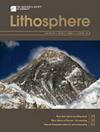海拉尔盆地南屯组湖相碳酸盐岩特征及其地质意义
IF 1.7
4区 地球科学
Q3 GEOCHEMISTRY & GEOPHYSICS
引用次数: 0
摘要
摘要在全球范围内,裂谷湖盆中经常发现湖相碳酸盐岩。由于它们往往不形成大规模的常规或非常规储层,在以往的油气勘探中没有得到足够的重视。近年来中国的勘探实例表明,湖相碳酸盐岩与非常规油气有着密切的关系。碳酸盐岩沉积泥岩在该区一直具有良好的勘探效果。然而,湖相碳酸盐岩的成因仍存在争议。碳酸盐岩与泥岩的沉积环境差异及其对非常规油气成藏的影响尚不清楚。本文以海拉尔盆地南屯组的湖相碳酸盐岩为研究对象。通过对岩相、地球化学和测井资料的分析,获得了一些研究成果。(a)研究区发现了代表半深湖至深湖环境的泥晶白云岩和泥灰岩两种湖相碳酸盐岩。(b)湖相白云岩,其成因可能与岩浆运动和深部热液作用有关,古气候极度干燥、炎热,古水环境盐碱化、厌氧。(c)泥岩中的碳酸盐沉积与凝结段有关,泥灰岩和泥晶白云岩分别代表凝结段的开始和结束。与碳酸盐岩周围的泥岩相比,LD代表了一个更干燥、更热、更咸的环境,这对沉积环境识别具有重要意义。此外,湖相碳酸盐岩沉积泥岩有机质特征较好,可形成良好的非常规油气储层,对进一步勘探具有重要意义。本文章由计算机程序翻译,如有差异,请以英文原文为准。
Characteristics and Geological Implications of Lacustrine Carbonate of Nantun Formation in Hailar Basin
Abstract Globally, lacustrine carbonate rocks are often found in rift lake basins. Because they often do not form large-scale conventional or unconventional reservoirs, they have not received enough attention in previous oil and gas exploration. Recent years, exploration examples in China show that lacustrine carbonate has close relationship with unconventional oil and gas. Mudstone with carbonate deposits always has a good exploration effect in the area. However, the genesis of lacustrine carbonate is still controversial. The sediment environment difference between carbonate and mudstone and its effects on unconventional hydrocarbon accumulation are not yet clear. This paper focuses on lacustrine carbonate found in the Nantun Formation in Hailar Basin. Through the analysis of lithofacies, geochemistry, and logging data, several findings have been obtained in the current study. (a) Two kinds of lacustrine carbonates, micrite dolomite and marlstone, which represent semideep to deep lake environments, have been identified in the research area. (b) Lacustrine dolomite (LD), whose genesis may relate to magmatic movement and deep hydrothermal processes, shows an extremely dry, hot paleoclimate and a saline, anaerobic ancient water condition. (c) Carbonate deposition in mudstone is related to the condensation section, and marlstone and micrite dolomite represent the beginning and end of the condensation section, respectively. Compared with mudstone around carbonate rocks, LD represents a drier, hotter, and saltier environment, which is of significance for sedimentary environment identification. In addition, the mudstone with lacustrine carbonate deposits has better organic matter characteristics and can form good unconventional oil and gas reservoirs that are of great significance for further exploration.
求助全文
通过发布文献求助,成功后即可免费获取论文全文。
去求助
来源期刊

Lithosphere
GEOCHEMISTRY & GEOPHYSICS-GEOLOGY
CiteScore
3.80
自引率
16.70%
发文量
284
审稿时长
>12 weeks
期刊介绍:
The open access journal will have an expanded scope covering research in all areas of earth, planetary, and environmental sciences, providing a unique publishing choice for authors in the geoscience community.
 求助内容:
求助内容: 应助结果提醒方式:
应助结果提醒方式:


